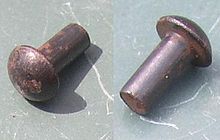Why NSNs? As I mentioned in previous articles, almost every product sold in the world, at any store, has a reference number. This number can be a Universal Product Code (UPC), a Unique Product Identifier (UPI), a Model Number, a Manufacturer Part Number, Drawing Number, SKU, UPC, EAN, ISBN, etc.
Manufacturer Part Numbers (MPN) are assigned by each manufacturer using their own criteria. There is no enforced standard for the MPN, although there are some industry conventions.
For example, one manufacturer might produce an item and assign it part number A123, while another manufacturer might produce a completely different item and also assign the same part number. Additionally, different manufacturers implement different business rules regarding the significance of the part number itself. For example, the use of spaces or dashes might be significant to one manufacturer but completely irrelevant to another.
For this reason, the US, NATO, and other governments adopted a means of assigning the same catalog number to items that have common technical characteristics. This is done using the NSN.
Let’s take for example, the rivet pictured above. It has the following Reference Numbers from different manufacturers or organizations that all refer to the same item:
AF3213-6-02
AF3213-6-2
CR3213-6-02
CR3213-6-2
HC3213-6-02
HC3213-6-2
MIL-R-7885/2
M7885/2-6-02
NAS9301BNS-6-02
10111712
So, what the federal logistics information system does is to assign one stock number to designate all those part numbers that share the same “form, fit, function”.
That rivet is assigned NSN 5320-01-435-5075 because all those part numbers share the same technical characteristics, such as size, material, type, etc.
The catalog of all these stock numbers is part of the Federal Logistics Information System (FLIS) maintained by the Defense Logistics Agency (DLA) in Battle Creek, Michigan.


